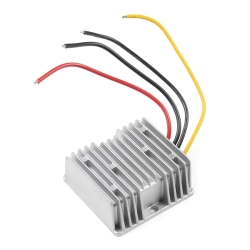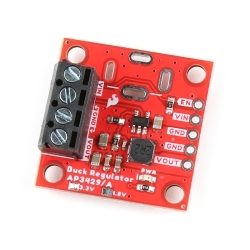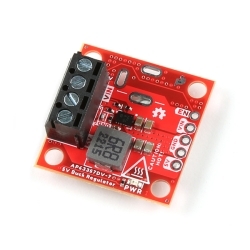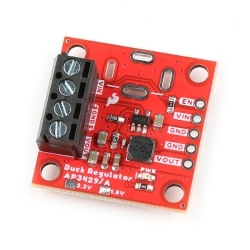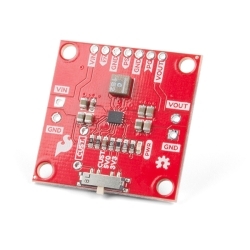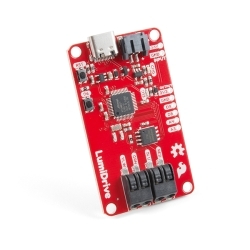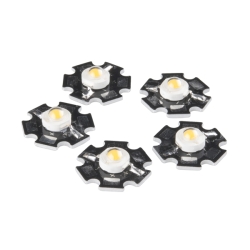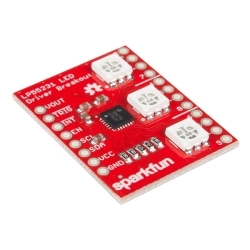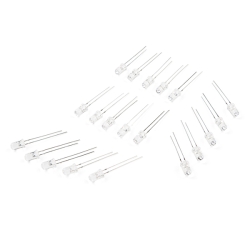PicoBuck LED Driver
Helpful Documentation
Product Overview
The PicoBuck LED Driver is an economical and easy to use driver that will allow you to control and blend three different LEDs on three different channels. By default, each channel is driven at 330mA; that current can be reduced by either presenting an analog voltage or a PWM signal to the board. Version 12 of the board adds a solderable jumper that can be closed to increase the maximum current to 660mA. The new voltage regulator also increased the voltage rating on the various components on the board, allowing it to be used up to the full 36V rating of the AL8805 part.
Three signal inputs are provided for dimming control. You can use the PWM signal from an Arduino or your favorite microcontroller to dim each channel individually, or you can tie them all to the same PWM for simultaneous dimming. Dimming can be done by an analog voltage (20%-100% of max current by varying voltage from .5V-2.5V) or by PWM (so long as PWM minimum voltage is less than .4V and maximum voltage is more than 2.4V) for a full 0-100% range. A small jumper is provided for each channel to allow you to increase the drive strength from 330mA to 660mA. Two mounting holes for 4-40 or M3 screws are provided on either side of the board. They are perforated so they can be easily snapped off with a pair of pliers, if a smaller footprint is desired.
Note: If you're going to use screw terminals, this board uses two different sizes. Check the related products for both sizes you'll need.
Note: The PicoBuck LED Driver was made in collaboration with Ethan Zonca. A portion of each sale is given back to him.
Documents:
- Schematic
- Eagle Files
- Datasheet (AL8805W5)
- Hookup Guide
- Protofusion Page
- GitHub
Documentation
Customer Reviews

Stock and Customer Discounts
Available Discounts
- $16.63 | 10+ units
- $15.75 | 25+ units
- $14.88 | 100+ units

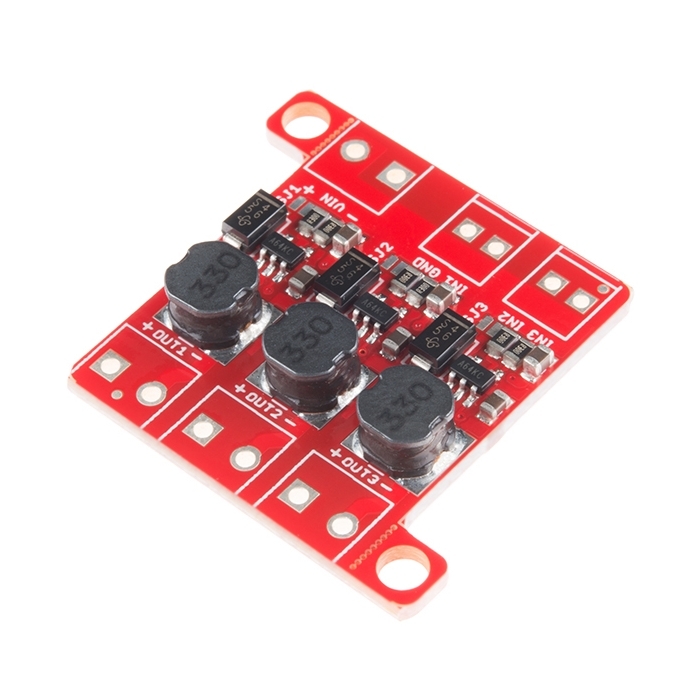
 Hookup Guide
Hookup Guide Schematic
Schematic Datasheet (AL8860)
Datasheet (AL8860)